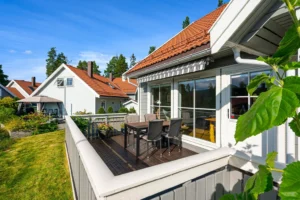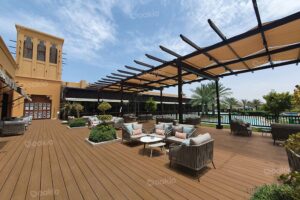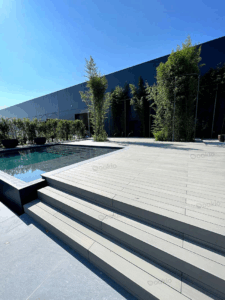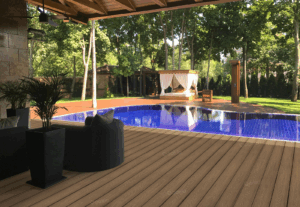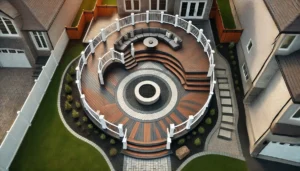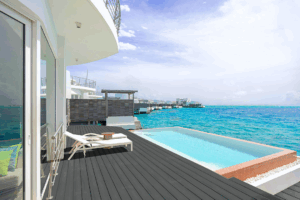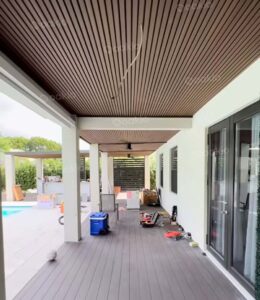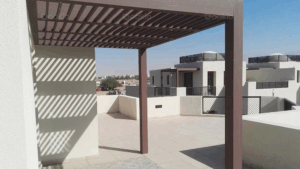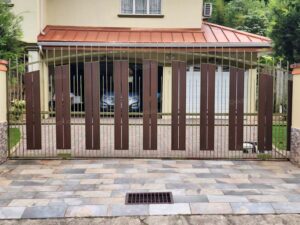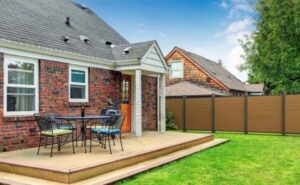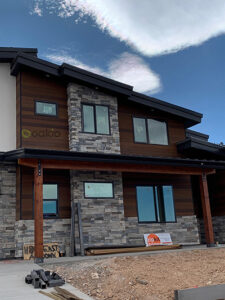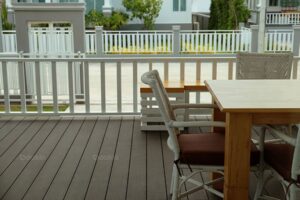Composite Decking for Restaurants and Other Design Ideas for Your New Business
Thoughtful design is key to a successful dining experience, and one practical solution gaining popularity is composite decking for restaurants. As more establishments embrace outdoor dining, choosing materials that combine durability, style, and sustainability becomes essential. Composite decking offers weather resistance, low maintenance, and a polished look ideal for high-traffic hospitality spaces.

Unlike traditional wood, it doesn’t splinter, warp, or fade easily, making it a reliable long-term investment for restaurant patios, rooftop bars, and garden dining areas. For restaurant owners, hospitality investors, designers, and contractors, incorporating composite decking into your plans not only boosts aesthetic appeal but also simplifies upkeep and improves safety.
In this article, we’ll explore how to elevate your restaurant’s design through better floor plan layouts, code-compliant planning, and strategic use of innovative materials. Whether you’re renovating an existing space or building from the ground up, these actionable insights will help you create a dining environment that’s both beautiful and built to last.
Planning Your Restaurant: Floor Plan Essentials
A well-thought-out floor plan is essential to the efficiency, ambiance, and overall success of any restaurant. It shapes how staff move through the space, how customers experience the environment, and how well the business operates during peak hours. In the kitchen area, each job should have a clearly defined station, such as prep, cooking, plating, and dishwashing, to ensure smooth workflow and to minimize the risk of kitchen staff bumping into each other.
Strategic placement of equipment and storage also reduces wasted movement, improving efficiency and safety. For the dining space, circulation paths must accommodate both guests and servers without causing bottlenecks. It’s also important to take advantage of good views or natural light when planning dining zones.
Tables should be positioned to create comfortable, intimate seating while avoiding “bad tables” located near restrooms, kitchen doors, or the front entrance. These areas tend to be noisy or have more foot traffic, which can disrupt the dining experience. Popular ideas for restaurant floor plans include open kitchens that offer guests a visual connection to food preparation, bar-centric layouts that foster a social atmosphere, and alfresco designs that extend dining into outdoor spaces.
For restaurants with increasingly valuable areas such as patios or decks, durable materials are crucial. Composite decking for restaurants offers a sleek, low-maintenance solution without requiring much attention in your planning phase. Ultimately, a restaurant floor plan should align with the brand’s concept while promoting ease of movement, maximizing seating capacity, and creating a welcoming environment that keeps customers coming back.
Code Guidelines and Safety Considerations
Designing a restaurant involves more than aesthetics; it must also meet building codes and safety regulations to ensure a secure and accessible environment for both staff and customers. Emergency exit routes are a top priority; layouts must allow people to evacuate quickly in case of fire or other emergencies.
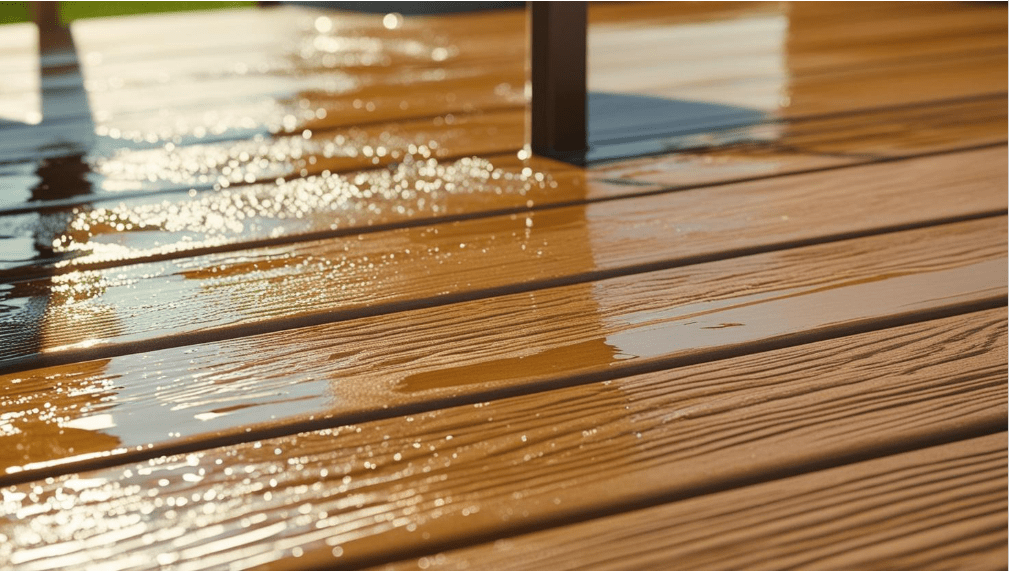
Accessibility codes are equally important, as they ensure that people with disabilities can comfortably access and enjoy the facility. According to the 2010 ADA Standards for Accessible Design, at least 5% of dining tables, or at least one, if fewer than twenty, must be accessible. Entrances should be at least 36 inches wide and accessible via ramps with a maximum 2% slope if not flush with the ground. Codes also define minimum aisle widths, anti-slip flooring requirements, and fire safety standards for kitchens.
When designing outdoor spaces, international codes require materials that are cleanable, durable, and safe for public use. This is where composite decking for restaurants becomes a practical option. For a well-integrated solution, a WPC floor plan for restaurant spaces, especially those extending into outdoor patios, can meet both functional and regulatory needs. By integrating code-compliant planning and materials, restaurants can deliver a safer, more inclusive, and future-ready dining experience.
Composite Decking for Restaurants: The Smart Outdoor Solution
Composite decking for restaurants is a smart, long-term alternative to traditional timber, particularly for outdoor dining areas that demand resilience, safety, and minimal maintenance. Regular timber is vulnerable to the elements. It can absorb moisture, grow algae during colder months, and eventually splinter or erode over time.
Composite decking, especially WPC (wood plastic composite), is engineered from a mix of recycled plastic and wood fibers, giving it superior durability, weather resistance, and structural integrity that makes it ideal for commercial use. It is also designed with slip-resistant surfaces to ensure safety during rainy weather, which is crucial for high-traffic hospitality spaces. This material resists mold, mildew, termites, and stains, reducing maintenance costs and cleaning time. It only requires basic sweeping and washing with soap and water, allowing restaurant staff to focus on service rather than upkeep.
Because WPC is made from recycled materials, it also qualifies as an eco-friendly solution, ideal for establishments that value sustainability. It contributes to noise reduction as well, absorbing sound and vibration, which adds comfort to busy restaurant environments. In terms of design, composite decking integrates seamlessly with many restaurant flooring ideas, from modern rooftop bars to cozy patio extensions. Companies like Oakio are at the forefront of this innovation, offering products that combine performance, sustainability, and aesthetic versatility. Their decking options are compatible with a variety of design schemes and floor plans.
When planning a WPC floor plan for restaurant spaces, composite decking offers more than just durability; it also enhances the customer experience through comfort, safety, and style. Whether you’re designing a new build or renovating an existing restaurant, incorporating WPC decking into your plans creates an inviting and future-ready environment that will serve your business and your guests for years to come.
Design Ideas for Restaurant Outdoor Spaces
As outdoor dining continues to grow in popularity, it’s smart to make the most of your available exterior spaces through thoughtful design and material selection. Rooftop bars, for example, can transform unused space into a vibrant dining area with scenic views. If your restaurant has access to a garden or yard, building a patio with an open kitchen layout can enhance the dining experience.
Incorporating composite decking for restaurants in these areas not only adds visual appeal but also ensures long-lasting performance in high-moisture environments. For those exploring restaurant kitchen flooring ideas, composite decking is a practical option in semi-open or outdoor kitchens due to its slip-resistant, mold-resistant, and easy-to-clean properties.
Sidewalk seating is also an excellent way to create charming outdoor spaces, especially in walkable neighborhoods. If your location includes a pool, it can serve as a striking visual feature, as long as the decking materials can withstand constant moisture. WPC floor plans for restaurants offer design flexibility and structural durability, making them ideal for these applications.
Enhance your outdoor areas further with planters, ambient lighting, and modular furniture. For diverse color and texture options, Oakio provides a wide selection of WPC decking that blends performance with style.
Conclusion
Designing a restaurant can feel overwhelming, but with the right approach, it becomes an exciting opportunity to create a functional and memorable space. Working with experienced designers and contractors can provide valuable insights, especially when exploring practical floor plans for restaurant ideas that balance aesthetics, flow, and efficiency.
Material selection is just as important. Prioritize those that offer style, safety, and sustainability. If future expansion is part of your plan, consider modular options that allow flexibility. For outdoor spaces, composite decking for restaurants is a smart, durable choice that meets safety standards while elevating the overall look of your establishment. Always review local codes and obtain quotes to ensure that your design aligns with regulations and budget.
If you’re planning to incorporate composite materials, Oakio WPC is worth exploring. You can request product samples and schedule design consultations to evaluate quality and compatibility with your vision. Thoughtful planning today leads to long-term success.
Trending Reading
What Are the Differences Between the WPC Board and PVC Board?
[2025 Update] How Long Does WPC Decking Last?
